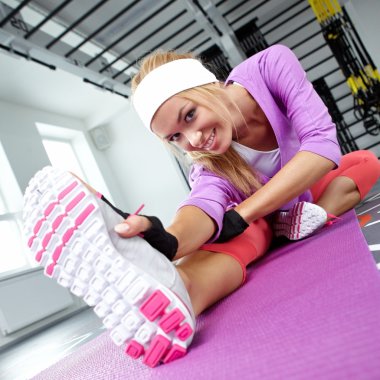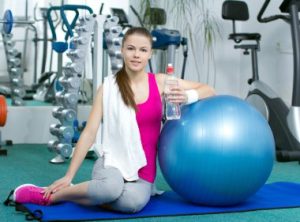
Can I Exercise If I Have Candida (7 Important Factors)
Can I exercise if I have Candida? is a common question among those grappling with this fungal infection. While moderate exercise can be beneficial, it’s crucial to tailor your regimen to support your body’s healing process and not exacerbate Candida overgrowth. In a world brimming with wellness trends and fitness fervor, the question of whether one can exercise while grappling with Candida, a persistent fungal foe, emerges as a beacon of curiosity.
Candida, notorious for its stealthy infiltration and disruptive presence in the body, often leaves individuals pondering the compatibility of sweat-drenched workouts with its relentless grip. Yet, amidst this conundrum lies a journey of empowerment and adaptation, where the symbiosis of exercise and Candida management unfolds as a narrative of resilience and determination. Let us embark on a voyage through the realms of fitness and fungal intricacies, where the pursuit of health becomes not just a physical endeavor but a testament to the tenacity of the human spirit.

Can I Exercise If I Have Candida
Yes, you can exercise if you have Candida, but it’s essential to approach it cautiously and tailor your workouts to accommodate your condition.
Understanding Candida and Exercise Compatibility
Candida, a type of yeast that naturally resides in the body, can overgrow and cause health issues when its balance is disrupted. Individuals with Candida often wonder if exercise is safe and beneficial for them.
Balancing Exercise and Candida Management
Exercise can be a crucial component of managing Candida, as it supports overall health and immune function. However, it’s vital to choose the right types of exercise and intensity levels to avoid exacerbating Candida symptoms.
Low-Impact Options and Mindful Movement
Opt for low-impact exercises such as walking, swimming, or yoga, which can promote circulation, reduce stress, and support immune function without placing excessive strain on the body.
Nutrition and Rest
Incorporate a balanced diet rich in anti-inflammatory foods and prioritize adequate rest and recovery to support your body’s ability to manage Candida overgrowth effectively.
Candida and Exercise: Understanding the Relationship
Impact of Candida on the Body
Candida, a type of yeast, is normally present in small amounts in the body, particularly in the mouth, digestive tract, and vagina. However, when its growth becomes unchecked, it can lead to various health issues. Candida overgrowth, often referred to as candidiasis, can impact the body in several ways. Firstly, it can cause oral thrush characterized by creamy white lesions on the tongue and inner cheeks, leading to discomfort and difficulty swallowing.
Additionally, candidiasis in the digestive tract can result in symptoms such as bloating, gas, diarrhea, and abdominal pain. Furthermore, vaginal yeast infections, a common manifestation of candidiasis, can cause itching, burning, and abnormal discharge. Systemic candidiasis, where the yeast spreads throughout the body, can lead to more severe symptoms, including fatigue, joint pain, and even cognitive dysfunction. Thus, the impact of Candida on the body can be significant, affecting various bodily systems and causing discomfort and distress for those affected.
Effects of Exercise on Candida
Regular exercise can significantly impact Candida, a type of yeast that naturally resides in the human body. Exercise can help regulate the body’s immune response, reducing the likelihood of Candida overgrowth. Physical activity boosts circulation and oxygenation, creating an environment less favorable for Candida proliferation.
Moreover, exercise promotes stress reduction, which can mitigate factors contributing to Candida overgrowth, such as cortisol levels. Additionally, maintaining a healthy weight through exercise can help prevent conditions like obesity, which is linked to increased susceptibility to Candida infections. However, excessive exercise or intense workouts may weaken the immune system, potentially exacerbating Candida-related issues. Therefore, moderation and balance in exercise routines are crucial for managing Candida effectively.
Potential Benefits of Exercise for Candida Patients
Regular exercise can offer numerous potential benefits for individuals battling candidiasis. Firstly, exercise boosts the immune system, helping the body to better fend off infections, including those caused by Candida overgrowth. Additionally, physical activity can reduce stress levels, which is crucial since stress can weaken the immune system and exacerbate candidiasis symptoms.
Moreover, exercise promotes better circulation, aiding in the delivery of oxygen and nutrients to tissues throughout the body, thereby supporting the body’s natural ability to fight off infections. Furthermore, regular exercise can contribute to weight management and improve metabolic function, potentially reducing the risk of conditions that may predispose individuals to candidiasis.
However, it’s important for candida patients to engage in gentle, low-impact exercises initially, as intense workouts may further stress the body and potentially worsen symptoms. Always consult with a healthcare professional before starting any new exercise regimen, especially if dealing candidiasis.
Risks and Precautions
While exercise can be beneficial, it’s essential for candida patients to approach it with caution. Intense workouts or prolonged physical activity might lead to increased stress levels, which can compromise the immune system and exacerbate candida symptoms. It’s crucial to strike a balance and avoid overexertion. Additionally, wearing breathable clothing and practicing good hygiene can help prevent the buildup of sweat and moisture, creating an environment conducive to candida growth.

Types of Exercises Suitable for Candida Patients
Low-Intensity Cardiovascular Exercises
For individuals dealing with candida overgrowth, engaging in suitable exercises is crucial to support their recovery and overall health. Low-intensity cardiovascular exercises stand out as a beneficial option for candida patients. These exercises, such as brisk walking, swimming, or cycling at a moderate pace, help improve circulation, boost metabolism, and support the body’s natural detoxification processes.
Since candida overgrowth often leads to fatigue and weakness, low-intensity cardio offers a gentle yet effective way to enhance cardiovascular health without placing excessive stress on the body. Additionally, these exercises promote a balanced immune response, which is essential for managing candida-related symptoms. Incorporating low-intensity cardiovascular exercises into a comprehensive wellness routine can contribute significantly to the well-being of candida patients by promoting overall fitness and aiding in the management of their condition.

Resistance Training
Resistance training, involving exercises that work against a force, such as weightlifting or using resistance bands, can be particularly advantageous. This form of exercise helps build lean muscle mass, which in turn boosts metabolism and supports overall health. Additionally, resistance training can help improve insulin sensitivity and regulate blood sugar levels, which are crucial for Candida patients as high sugar levels can exacerbate symptoms. However, it’s essential for Candida patients to consult with a healthcare professional or certified trainer to tailor their resistance training program to their specific needs and capabilities, ensuring a safe and effective workout regimen.
Flexibility and Stretching Exercises
Flexibility and stretching exercises are particularly suitable for individuals with Candida overgrowth as they help alleviate muscle tension and improve overall circulation, aiding in the body’s natural detoxification process. Gentle stretching routines, such as yoga or Pilates, can enhance flexibility while promoting relaxation, reducing stress levels, and supporting immune function.
These exercises also encourage deep breathing, which can help oxygenate tissues and promote the elimination of toxins. Incorporating regular stretching into a Candida patient’s routine can contribute to a sense of well-being and may assist in managing symptoms associated with Candida overgrowth, such as fatigue and muscle stiffness.
Mind-Body Exercises
For Candida patients, incorporating mind-body exercises into their routine can offer numerous benefits for both physical and mental well-being. Practices such as yoga, tai chi, and qigong are particularly suitable as they focus on gentle movements, breathwork, and mindfulness, which can help reduce stress levels and promote relaxation.
These exercises also encourage flexibility, balance, and strength without placing excessive strain on the body, making them ideal for individuals dealing with Candida overgrowth. Additionally, mind-body exercises can support the immune system and aid in regulating hormonal balance, which are crucial aspects of managing Candida-related symptoms. By integrating these gentle yet effective exercises into their daily regimen, Candida patients can cultivate a holistic approach to their health and enhance their overall quality of life.

Guidelines for Exercising with Candida
Consultation with Healthcare Provider
Before starting any exercise regimen while dealing with candida, it’s crucial to consult your healthcare provider. Your doctor can provide personalized guidance based on your medical history and current condition. Seek professional advice to ensure your exercise plan aligns with your treatment and overall health goals.
Understanding Personal Limitations
Recognizing and respecting your personal limitations is key when exercising with candida. Listen to your body and avoid pushing yourself too hard. It’s essential to tailor your workouts to suit your current energy levels and physical abilities.
Monitoring Symptoms
Keep a close eye on how your body responds to exercise while managing candida. Watch out for any worsening of symptoms such as fatigue, joint pain, or digestive issues. If you notice any adverse reactions, adjust your routine accordingly and consult your healthcare provider if necessary.
Hydration and Nutrition
Maintaining proper hydration and nutrition is vital for supporting your body during exercise with candida. Drink plenty of water to stay hydrated and aid in flushing out toxins. Focus on a balanced diet rich in nutrients to support your immune system and overall well-being. Incorporate foods that are low in sugar and promote gut health to help manage candida overgrowth effectively.
Specific Exercise Considerations for Candida Patients
Timing of Exercise Sessions
For candida patients, timing exercise sessions strategically is crucial. Opt for low-intensity workouts during periods of lower candida activity. Align exercise with peak energy levels to prevent fatigue. Adjust timing to avoid exacerbating candida symptoms.
Choice of Clothing and Equipment
Select breathable, moisture-wicking fabrics to minimize candida growth. Avoid tight clothing that can create a warm, moist environment. Opt for antimicrobial or hypoallergenic materials to reduce irritation. Choose workout gear that promotes airflow and deters fungal overgrowth.
Environmental Considerations
Exercise in well-ventilated spaces to minimize humidity and moisture buildup. Clean exercise equipment thoroughly to prevent fungal contamination. Consider indoor exercise options during high pollen seasons to alleviate allergy-induced candida flare-ups. Maintain a clean and hygienic environment to deter fungal proliferation.
Managing Stress Levels
Prioritize stress management techniques to support candida treatment. Incorporate mindfulness practices like meditation and yoga to reduce cortisol levels. Engage in activities that promote relaxation and mental well-being. Strive for a balanced lifestyle to alleviate stress and support candida recovery.
Sample Exercise Routine for Candida Patients
Warm-Up
For individuals battling candida overgrowth, incorporating a tailored exercise routine into their regimen can be immensely beneficial. Beginning with a gentle warm-up is crucial, serving to prepare the body for physical activity while also aiding in the circulation of lymphatic fluids and supporting detoxification processes.
Incorporate dynamic movements like arm circles, leg swings, and light jogging to increase blood flow and loosen muscles. This helps prevent injury and primes your body for the workout ahead. This phase not only primes the body for subsequent exercise but also helps alleviate any stiffness or discomfort associated with candida-related symptoms. By prioritizing a proper warm-up, candida patients can enhance the effectiveness of their exercise routine while minimizing the risk of injury or exacerbating underlying health issues.
Low-Impact Cardiovascular Exercise
An exercise routine tailored for individuals with Candida overgrowth focuses on low-impact cardiovascular exercises to support overall health and aid in the management of symptoms. Begin with a gentle warm-up of five minutes to prepare the body for activity. Follow this with 20-30 minutes of low-impact cardio exercises like swimming, stationary cycling, or elliptical training, maintaining a moderate intensity to avoid overstressing the body. This exercise regimen not only enhances cardiovascular health but also assists in boosting immune function and alleviating symptoms associated with Candida overgrowth.
Resistance Training
Incorporate resistance training to strengthen muscles and improve overall body composition. Focus on exercises that target major muscle groups, such as squats, lunges, and push-ups. Start with light weights or resistance bands and gradually increase intensity as your strength improves. Resistance training helps enhance metabolism and promote fat loss, crucial for managing candida symptoms.

Cool Down and Stretching
Conclude your exercise session with a cool down and stretching routine to promote flexibility and prevent muscle soreness. Perform static stretches targeting major muscle groups, holding each stretch for 15-30 seconds. Incorporating relaxation techniques like deep breathing can also aid in stress reduction and support overall wellness for candida patients.
By following this sample exercise routine tailored for candida patients, you can effectively manage symptoms while promoting overall health and well-being. Remember to listen to your body and consult with a healthcare professional before starting any new exercise program.
Lifestyle Factors Supporting Exercise and Candida Management
Diet and Nutrition
Lifestyle factors play a crucial role in both exercise adherence and candida management, with diet and nutrition standing at the forefront of this holistic approach. Incorporating a balanced diet rich in whole foods, particularly those low in refined sugars and carbohydrates, is fundamental for curtailing candida overgrowth.
Emphasizing nutrient-dense foods such as leafy greens, lean proteins, and healthy fats not only supports immune function but also aids in maintaining optimal energy levels for consistent exercise routines. Moreover, hydration is key, as it helps flush toxins from the body and promotes digestive health, essential for combating candida. Prioritizing these dietary principles alongside regular exercise not only strengthens the body’s defenses against candida but also fosters overall well-being, enabling individuals to lead healthier, more active lives.
Sleep Hygiene
In the realm of lifestyle factors that support exercise and candida management, prioritizing optimal sleep hygiene emerges as a fundamental pillar. Adequate and quality sleep plays a pivotal role in maintaining a robust immune system, crucial for combating candida overgrowth. By ensuring a consistent sleep schedule and creating a conducive sleep environment, individuals can enhance their body’s ability to regulate inflammation and ward off infections, including candidiasis.
Furthermore, sufficient sleep promotes physical recovery and mental rejuvenation, fostering the energy and motivation needed to engage in regular exercise routines. When coupled with appropriate dietary choices and stress management techniques, prioritizing sleep hygiene completes a holistic approach to managing candida overgrowth while promoting overall well-being and vitality.
Stress Management Techniques
Maintaining a balanced lifestyle is crucial for supporting both exercise routines and managing conditions like Candida overgrowth, with stress management playing a pivotal role. Integrating regular exercise not only enhances physical health but also boosts mental well-being, helping to alleviate stress levels. Engaging in activities such as yoga, meditation, or even leisurely walks can effectively reduce stress hormones, thereby fostering a healthier immune system and potentially mitigating Candida-related symptoms.
Moreover, adopting stress-relieving techniques like deep breathing exercises or mindfulness practices can aid in regulating cortisol levels, which in turn may contribute to Candida management by minimizing factors that exacerbate its growth. By prioritizing stress management alongside exercise, individuals can establish a foundation for holistic health, promoting both physical fitness and resilience against Candida-related challenges.
Hygiene Practices
Alongside exercise, maintaining proper hygiene practices such as showering after workouts, wearing breathable clothing, and keeping skin dry can prevent the proliferation of Candida. Additionally, a balanced diet rich in fiber, lean proteins, and probiotics supports gut health, crucial for managing Candida. Adequate hydration, quality sleep, and stress management techniques further contribute to overall wellness and Candida management. By integrating these lifestyle factors, individuals can support their exercise regimen while effectively managing Candida through hygienic practices.
Frequently Asked Questions (FAQ) about Can I Exercise If I Have Candida
Q1. Can I exercise if I have candida?
A. Yes, you can exercise with candida, but it’s essential to approach it cautiously and consider your energy levels and overall health.
Q2. What types of exercises are suitable for individuals with candida?
A. Low-impact exercises such as walking, yoga, swimming, and cycling are generally suitable. However, it’s essential to listen to your body and avoid strenuous activities that may deplete your energy reserves.
Q3. Are there any exercises that should be avoided when dealing with candida?
A. High-intensity workouts or exercises that cause excessive sweating and stress on the body should be avoided, as they may weaken the immune system and exacerbate candida symptoms.
Q4. How should I adjust my exercise routine if I have candida?
A. It’s crucial to prioritize gentle, moderate exercise and ensure you’re getting enough rest and relaxation. Consider incorporating activities like stretching, meditation, or tai chi to reduce stress and support your immune system.
Q5. Can exercise help alleviate candida symptoms?
A. While exercise can support overall health and boost immunity, there’s limited evidence to suggest that it directly affects candida symptoms. However, maintaining a healthy lifestyle, including regular exercise, may contribute to better overall well-being.
Q6. Should I consult a healthcare professional before starting an exercise routine with candida?
A. Yes, it’s advisable to consult with a healthcare professional, particularly if you have severe candida symptoms or underlying health conditions. They can provide personalized advice and recommendations based on your specific circumstances.
Q7. How can I maintain proper hygiene while exercising with candida?
A. Showering immediately after exercising and changing into clean, breathable clothing can help prevent the buildup of moisture and yeast overgrowth. Additionally, avoid sharing personal items like towels or workout gear to minimize the risk of spreading candida.
Q8. Are there any dietary considerations to keep in mind when exercising with candida?
A. A balanced diet rich in whole foods, low in sugar and refined carbohydrates, can support overall health and help manage candida symptoms. Be mindful of your food choices, especially before and after exercise, to maintain optimal energy levels and support your immune system.
Q9. Can over-exercising worsen candida symptoms?
A. Yes, over-exercising can potentially weaken the immune system and increase susceptibility to infections, including candida. It’s important to strike a balance between staying active and allowing your body enough rest and recovery time.
Q10. What are some signs that I may be overdoing it with exercise while dealing with candida?
A. Signs of over-exercising may include persistent fatigue, increased susceptibility to infections, difficulty recovering from workouts, and exacerbation of candida symptoms such as itching, inflammation, or digestive issues. If you experience any of these symptoms, consider scaling back your exercise routine and consulting with a healthcare professional.
Conclusion
In conclusion, while maintaining an exercise routine can be beneficial for overall health and well-being, individuals with candida overgrowth should approach physical activity with caution and under the guidance of healthcare professionals. Balancing exercise with proper nutrition, stress management, and appropriate treatment for candida is essential to promote healing and prevent exacerbation of symptoms.
By prioritizing holistic health practices and listening to the body’s cues, individuals can navigate exercise safely while managing candida overgrowth effectively. Remember, a personalized approach tailored to individual needs is paramount for achieving optimal health outcomes.